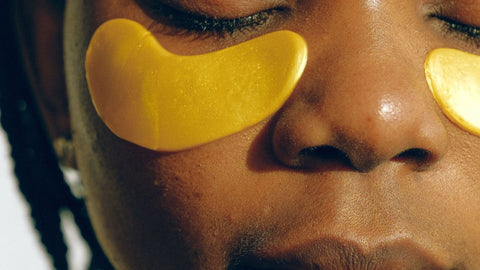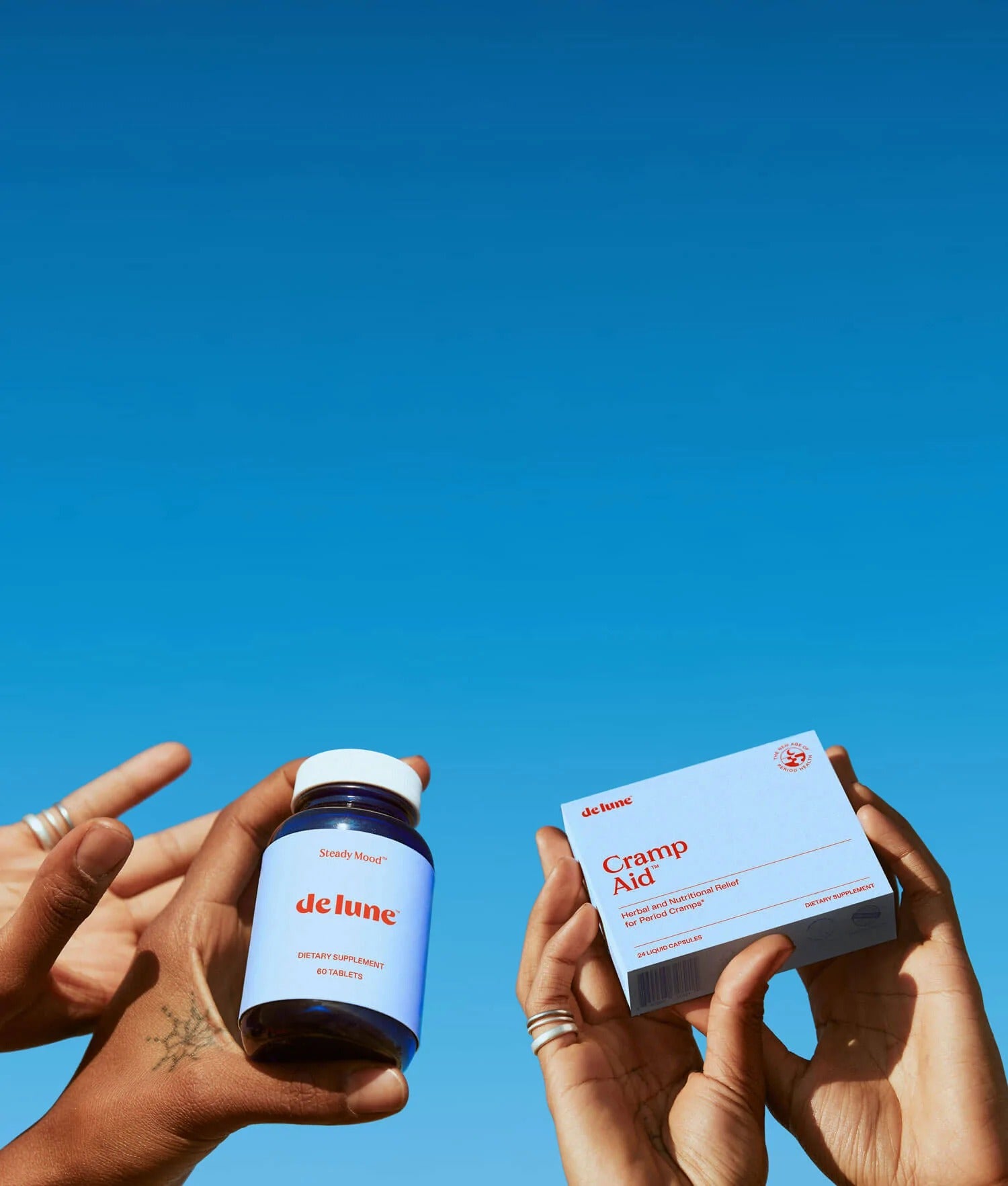Ginger Background & Basics
Known botanically as Zingiber officinale, ginger is one of the world’s most cultivated spices.14 Loved by King Henry VIII and lauded by Shakespeare, ginger possesses one of the herbal world's richest cultural histories. It’s said that Confucious ate all his meals spiced with ginger. In medieval England, the name ‘ginger’ actually became synonymous with ‘spice’.13
In Ayurvedic medicine (i.e. traditional Indian healing), ginger is known as the “universal remedy”. No wonder. This little root contains a whole pharmacy of ingredients with multiple health benefits, from motion sickness15 to preventing cancer.16
Many naturopaths argue that the therapeutic scope of ginger is beyond that of any modern drug. With a wonderfully warm and citrusy aroma, even those unfamiliar with herbal medicine know that a hot cup of ginger tea is a potent home remedy for all sorts of variations of ‘feeling under the weather’. And for good reason: it works.
When it comes to its healing powers, ginger is the sum of its parts. Whole ginger is made up of literally hundreds of smaller, active constituents.13 Many of these, such as ascorbic acid, beta-carotene, caffeic acid, capsaicin, curcurmin, gingerol, gingerdiol, gingerdione, limonene, quercetin, and shogal, are strong antioxidants.13
Supplements containing just one of these smaller compounds are available, and many drugs have attempted to isolate ginger’s single constituents for therapeutic benefit. However, the real magic is in the synergy. All these smaller players work as team in whole ginger, interacting in infinitely complex ways that make the whole root that much more powerful.
What is Dysmenorrhea?
Dysmenorrhea is the clinical term for period pain. It’s a common—and often debilitating—gynecological condition that affects between 45 and 95% of people with periods.1 Despite its high prevalence, dysmenorrhea is often poorly treated, and even disregarded, by health professionals and pain researchers.
While many people with periods accept pain as a normal part of their cycle, it doesn’t have to be that way. Dysmenorrhea is treatable, and menstruating people have options for managing their pain. This article describes how ginger offers a natural solution for reducing period cramps.
How Ginger Can Help Relieve Dysmenorrhea
Ginger is nature’s painkiller. It’s a robust analgesic (i.e. pain-reducer),17 and has been managing painful conditions like arthritis, fibromyalgia, migraines, and notably, dysmenorrhea, for thousands of years.18 In fact, ginger is one of the most commonly used natural products among people with dysmenorrhea.19 A review of eight scientific studies reported that, as pain treatment, ginger has a better safety profile than over-the-counter painkillers.20
How exactly does ginger reduce period pain? Scientists aren’t 100% sure, but have a few good theories:
- Ginger reduces inflammation that makes dysmenorrhea worse21
- Ginger blocks the production of prostaglandins that cause dysmenorrhea in the first place17
- Or, probably most likely, a combination of the two above actions22
Ginger is a known anti-inflammatory agent.17,22 Its anti-inflammatory action is not surprising; ginger’s in the same family of herbs as other heavy inflammation hitters, like turmeric and cardamom. Ginger harnesses over 40 constituents with antioxidant activities, which are widely recognized for mitigating the inflammatory process.23
Ginger also happens to be brimming with active enzymes—biochemicals that make other biochemical reactions happen. This is where we get pretty deep into the science of pain. In an intricate interplay, ginger’s enzymes combine with ginger’s other synergists (again, the synergy is important) to promote a healthy balance of eicosanoids. Eicosanoids are active compounds with hormone-like activity.
There are three types of eicosanoids:
- Prostaglandins
- Thromboxanes
- Leukotrienes
These three types of eicosanoids interact with one another in virtually every organ in the body. All play a role in the pain response, but prostaglandins are the type of eicosanoids most relevant to dysmenorrhea. There are lots of different types of prostaglandins. Some do good things, like reduce inflammation; others do bad things, like cause period pain. The ratio of good prostaglandins to bad is what matters.
What's Wrong With NSAIDs Like Ibuprofen?
NSAIDs—also known as Non-Steroidal Anti-Inflammatory Drugs, like Advil, aspirin, and ibuprofen—are the go-to treatment for most people with painful periods.2,3 While effective for most, NSAIDs have limitations. For example:
Potential side effects include stomach pain, constipation, diarrhea, gas, heartburn, nausea, vomiting, headaches, drowsiness, and dizziness, though more serious side effects are possible.4 Depending on how one reacts to NSAIDs, they may cause more problems than they fix. It’s estimated that between 11 and 14% of menstruating people taking NSAIDs experience side effects.5
They don't work.
At least for 18% of people with periods.6 Scientists aren’t totally sure why NSAID-resistance is a thing, but they suspect genetic changes that impair NSAID absorption or metabolism may be to blame.7,8 Anatomical issues may also cause NSAID-resistance, like uterine fibroids (non-cancerous tumors in the womb), endometriosis (when endometrial-like cells grow outside the womb), or adenomyosis (when endometrial cells grow into the wall of the womb).9
Since NSAIDs fall short for so many with chronic pain, scientists are calling for safer tools for pain management.10 Herbs are a viable solution.
While NSAIDs have only been around since the 1960s, herbal remedies have been supporting health for centuries. The tradition is still thriving; approximately 60% of the world’s population is dependent almost entirely on plants as medication for all health problems,11 including menstrual disorders.12 Because plant compounds are known to be effective, about 25% of modern pharmaceutical drugs have an ancient herbal basis.13
When taken responsibly, herbs offer a natural alternative to pharmaceuticals with a lower risk of side effects.
Ginger Has Specific Advantages Versus NSAIDs
Big Pharma has long recognized the link between prostaglandins and inflammation. To date, at least 200 drugs have been specifically designed to manipulate eicosanoids and relieve the inflammatory process.24 NSAIDs are a prime example of these drugs; reducing prostaglandins is precisely how drugs like Advil, aspirin, and ibuprofen work to reduce pain.9
But, as you already know, these drugs are flawed. NSAIDs reduce all prostaglandins, including the protective, anti-inflammatory kind. That’s why NSAIDs have side effects.13
Ginger takes a more selective—and much safer—approach in the type of prostaglandins it targets. Ginger inhibits PgE225—one kind of pro-inflammatory prostaglandin that lives in a painful uterus.26 In fact, the build up of PgE2 in the uterus is a root cause of period cramps.
As part of the natural hormone fluxes that happen throughout the cycle, levels of the hormone progesterone drop just before menstruation begins. The drop in progesterone triggers the production of pain-causing prostaglandins to accumulate in the uterus27—a muscular organ, also known as the womb.
PgE2 prostaglandins then trigger the uterine muscles to contract, or tighten up. The uterus is capable of some serious muscle contractions. When these muscles contract very strongly, they can press against nearby blood vessels that deliver blood to the uterus. Blood carries oxygen, so no blood flow means uterine muscles can’t get the oxygen they need to function properly. Depriving the uterine muscles of oxygen is painful, and results in cramping.28
By blocking PgE2, ginger can help prevent this painful cascade from ever happening in the first place29—all with little to no side effects.30 
The Latest Ginger & Dysmenorrhea Research
The healing force of ginger is documented in hundreds of scientific studies.17,31,32 However, there are only seven studies that have specifically investigated ginger in women with dysmenorrhea.29,33,34,35,36,37,38
While studies are limited in number, all are randomized controlled trials (the gold standard as far as study designs go), all were conducted fairly recently, and all concluded that ginger is effective at combating period pain. Some of these studies compared ginger to placebo, while others compared ginger to over-the-counter painkillers.
The benefits of ginger are the real deal, not just the placebo effect at work. Three recent studies have tested ginger against placebo. These studies involved a total of 266 women with dysmenorrhea. A total of 141 women were given ginger capsules while 125 women were given placebo pills.
All three studies concluded that period pain was significantly less severe in the ginger group compared to the placebo group.33,34,35 In one study, 83% of women who took ginger reported an improvement in dysmenorrhea symptoms.33 In another, women who took ginger reported 11 hours less pain than those who took a placebo.34 Here’s what the study authors had to say about ginger:
- “Healthcare providers should consider it as treatment for women with primary dysmenorrhea.”
—Ensiyeh Jenabi & colleagues33
- “Ginger may be an effective and safe therapy for relieving pain in women with primary dysmenorrhea if administered at the onset or 3 days prior to menstruation.”
—Parvin Rahnama & colleagues34
- “Nurses and healthcare practitioners… need to acknowledge that ginger is a cheap, safe medical treatment that can be regarded as a first-line therapy.”
—Farzaneh Kashefi & colleagues35
Ginger vs NSAIDS
Two studies have compared ginger to NSAIDs. These studies involved a total of 272 women with dysmenorrhea; 111 women were given ginger capsules, 161 women were given over-the-counter NSAIDs.
Both studies found that ginger was just as effective as NSAIDs at relieving period pain.29,36 Here’s what the study authors had to say about ginger:
- “Ginger is as effective as ibuprofen in reliving pain in women with primary dysmenorrhea.”
—Giti Ozgoli & colleagues29
- “Ginger does not have adverse effects and is an alternative treatment for primary dysmenorrhea.”
—Marjan Shirvani & colleagues36
Why De Lune?
Thousands of years of ancient wisdom, along with a number of recent studies, tell us that ginger is a safe and effective option for relieving period pain. However, conditions like dysmenorrhea may be best addressed through multiple modes of action. Relying on just one method of treatment, such as ginger, may not be enough to eliminate period pain in some people.
We combed the science for the most effective nutrients and herbs for period pain relief, and combined them all, including ginger, in Cramp Aid—our non-drug answer to period cramps. Learn more about Cramp Aid here. 
References
1.Proctor, M., & Farquhar, C. (2006). Diagnosis and management of dysmenorrhoea. BMJ: British Medical Journal, 332(7550), 1134.
https://www.ncbi.nlm.nih.gov/pmc/articles/PMC1459624/
2. Harel, Z. (2006). Dysmenorrhea in adolescents and young adults: etiology and management. Journal of pediatric and adolescent gynecology, 19(6), 363-371.
https://pedclerk.bsd.uchicago.edu/sites/pedclerk.uchicago.edu/files/uploads/Dysmenorrhea.JPAG_.2006.pdf
3. Zahradnik, H. P., Hanjalic-Beck, A., & Groth, K. (2010). Nonsteroidal anti-inflammatory drugs and hormonal contraceptives for pain relief from dysmenorrhea: a review. Contraception, 81(3), 185-196.
http://www.contraceptionjournal.org/article/S0010-7824(09)00445-4/abstract
4. https://www.fda.gov/downloads/Drugs/DrugSafety/ucm089162.pdf
5. Marjoribanks, J., Ayeleke, R. O., Farquhar, C., & Proctor, M. (2015). Nonsteroidal anti-inflammatory drugs for dysmenorrhoea.
https://europepmc.org/abstract/med/26224322
6. Owen, P. R. (1984). Prostaglandin synthetase inhibitors in the treatment of primary dysmenorrhea: outcome trials reviewed. American journal of obstetrics & gynecology, 148(1), 96-103.
https://www.ajog.org/article/S0002-9378(84)80039-3/abstract
7. Ulehlova, J., Slavik, L., Kucerova, J., Krcova, V., Vaclavik, J., & Indrak, K. (2014). Genetic polymorphisms of platelet receptors in patients with acute myocardial infarction and resistance to antiplatelet therapy. Genetic testing and molecular biomarkers, 18(9), 599-604.
https://www.ncbi.nlm.nih.gov/pmc/articles/PMC4150366/
8. Weng, Z., Li, X., Li, Y., Lin, J., Peng, F., & Niu, W. (2013). The association of four common polymorphisms from four candidate genes (COX-1, COX-2, ITGA2B, ITGA2) with aspirin insensitivity: a meta-analysis. PloS one, 8(11), e78093.
http://journals.plos.org/plosone/article?id=10.1371/journal.pone.0078093
9. Oladosu, F. A., Tu, F. F., & Hellman, K. M. (2017). NSAID resistance in dysmenorrhea: epidemiology, causes, and treatment. American journal of obstetrics and gynecology.
https://www.sciencedirect.com/science/article/pii/S0002937817310955
10. McCarberg, B., & Gibofsky, A. (2012). Need to develop new nonsteroidal anti-inflammatory drug formulations. Clinical therapeutics, 34(9), 1954-1963.
https://www.sciencedirect.com/science/article/pii/S0149291812004869
11. Al-dalain, S., El-kutry, M. S., & Ibrahim, H. S. (2008). Inhibitory effect of aqueous extracts of barley and fenugreek on ulcer induction in rats. World Appl Sci J, 5(3), 332-9.
http://citeseerx.ist.psu.edu/viewdoc/download?doi=10.1.1.388.6751&rep=rep1&type=pdf
12. Yassin, S. A. (2012). Herbal remedy used by rural adolescent girls with menstrual disorders. J Am Sci, 8(1), 467-73.
http://www.jofamericanscience.org/journals/am-sci/am0801/065_7998am0801_467_473.pdf
13. Schulick, P. (1996). Ginger: common spice & wonder drug. Hohm Press.
https://www.amazon.com/Ginger-Common-Spice-Wonder-Drug-ebook/dp/B009DP5NKU/ref=sr_1_1?ie=UTF8&qid=1534487411&sr=8-1&keywords=Ginger%3A+common+spice+%26+wonder+drug
14. Govindarajan, V. S., & Connell, D. W. (1983). Ginger—chemistry, technology, and quality evaluation: part 1. Critical Reviews in Food Science & Nutrition, 17(1), 1-96.
https://www.tandfonline.com/doi/abs/10.1080/10408398209527343
15. Mowrey, D., & Clayson, D. (1982). Motion sickness, ginger, and psychophysics. The lancet, 319(8273), 655-657.
https://pdfs.semanticscholar.org/059d/cd5829436aa9e328713d0e3b992cdfe3760a.pdf
16. Lee, S. H., Cekanova, M., & Baek, S. J. (2008). Multiple mechanisms are involved in 6‐gingerol‐induced cell growth arrest and apoptosis in human colorectal cancer cells. Molecular Carcinogenesis: Published in cooperation with the University of Texas MD Anderson Cancer Center, 47(3), 197-208.
https://www.ncbi.nlm.nih.gov/pmc/articles/PMC2430145/
17. Ali, B. H., Blunden, G., Tanira, M. O., & Nemmar, A. (2008). Some phytochemical, pharmacological and toxicological properties of ginger (Zingiber officinale Roscoe): a review of recent research. Food and chemical Toxicology, 46(2), 409-420.
http://citeseerx.ist.psu.edu/viewdoc/download?doi=10.1.1.453.2286&rep=rep1&type=pdf
18. Chen, C. X., Barrett, B., & Kwekkeboom, K. L. (2016). Efficacy of oral ginger (zingiber officinale) for dysmenorrhea: a systematic review and meta-analysis. Evidence-Based Complementary and Alternative Medicine, 2016.
https://www.hindawi.com/journals/ecam/2016/6295737/abs/
19. Lu, I. C. (2010). Dysmenorrhea and related factors in Taiwanese adolescent girls. The University of Texas at Austin.
https://search.proquest.com/openview/9842e4b2491fe8a303a9cf135e423ec2/1?pq-origsite=gscholar&cbl=18750&diss=y
20. Lakhan, S. E., Ford, C. T., & Tepper, D. (2015). Zingiberaceae extracts for pain: a systematic review and meta-analysis. Nutrition journal, 14(1), 50.
https://nutritionj.biomedcentral.com/articles/10.1186/s12937-015-0038-8
21. Kim, J. K., Kim, Y., Na, K. M., Surh, Y. J., & Kim, T. Y. (2007). [6]-Gingerol prevents UVB-induced ROS production and COX-2 expression in vitro and in vivo. Free radical research, 41(5), 603-614.
https://www.tandfonline.com/doi/abs/10.1080/10715760701209896
22. Grzanna, R., Lindmark, L., & Frondoza, C. G. (2005). Ginger—an herbal medicinal product with broad anti-inflammatory actions. Journal of medicinal food, 8(2), 125-132.
https://www.liebertpub.com/doi/abs/10.1089/jmf.2005.8.125
23. Cuzzocrea, S., Riley, D. P., Caputi, A. P., & Salvemini, D. (2001). Antioxidant therapy: a new pharmacological approach in shock, inflammation, and ischemia/reperfusion injury. Pharmacological reviews, 53(1), 135-159.
http://pharmrev.aspetjournals.org/content/pharmrev/53/1/135.full.pdf
24. Srivastava, K. C., & Mustafa, T. (1992). Ginger (Zingiber officinale) in rheumatism and musculoskeletal disorders. Medical hypotheses, 39(4), 342-348.
https://www.sciencedirect.com/science/article/pii/030698779290059L
25. Lantz, R. C., Chen, G. J., Sarihan, M., Solyom, A. M., Jolad, S. D., & Timmermann, B. N. (2007). The effect of extracts from ginger rhizome on inflammatory mediator production. Phytomedicine, 14(2-3), 123-128.
https://www.sciencedirect.com/science/article/pii/S0944711306000493
26. Hudson, Tori. Women's Encyclopedia of Natural Medicine: Alternative Therapies and Integrative Medicine for Total Health and Wellness (Kindle Locations 12132-12133). McGraw-Hill Education. Kindle Edition.
https://www.amazon.com/Womens-Encyclopedia-Natural-Medicine-Alternative/dp/0071464735
27. Teimoori, B., Ghasemi, M., Hoseini, Z. S. A., & Razavi, M. (2016). The efficacy of zinc administration in the treatment of primary dysmenorrhea. Oman medical journal, 31(2),107.
https://www.ncbi.nlm.nih.gov/pmc/articles/PMC4861396/
28. https://my.clevelandclinic.org/health/diseases/4148-dysmenorrhea
29. Ozgoli, G., Goli, M., & Moattar, F. (2009). Comparison of effects of ginger, mefenamic acid, and ibuprofen on pain in women with primary dysmenorrhea. The journal of alternative and complementary medicine, 15(2), 129-132.
https://www.liebertpub.com/doi/abs/10.1089/acm.2008.0311
30. https://nccih.nih.gov/health/ginger
31. Terry, R., Posadzki, P., Watson, L. K., & Ernst, E. (2011). The use of ginger (Zingiber officinale) for the treatment of pain: a systematic review of clinical trials. Pain medicine, 12(12), 1808-1818.
https://academic.oup.com/painmedicine/article/12/12/1808/1846834
32. Kumar, G., Karthik, L., & Rao, K. B. (2011). A review on pharmacological and phytochemical properties of Zingiber officinale Roscoe (Zingiberaceae). Journal of Pharmacy Research, 4(9), 2963-2966.
https://www.researchgate.net/profile/Gaurav_Kumar78/publication/215802856_A_Review_on_Pharmacological_and_Phytochemical_Properties_of_Zingiber_officinale_Roscoe_Zingiberaceae/links/0912f50af20751f73f000000.pdf
33. Jenabi, E. (2013). The effect of ginger for relieving of primary dysmenorrhoea. Age (year), 21(1.16), 21-54.
https://pdfs.semanticscholar.org/f019/b7e19a460ed6b4d0aaadf69f7bae0830c6d8.pdf
34. Rahnama, P., Montazeri, A., Huseini, H. F., Kianbakht, S., & Naseri, M. (2012). Effect of Zingiber officinale R. rhizomes (ginger) on pain relief in primary dysmenorrhea: a placebo randomized trial. BMC complementary and alternative medicine, 12(1), 92.
https://bmccomplementalternmed.biomedcentral.com/articles/10.1186/1472-6882-12-92
35. Kashefi, F., Khajehei, M., Tabatabaeichehr, M., Alavinia, M., & Asili, J. (2014). Comparison of the effect of ginger and zinc sulfate on primary dysmenorrhea: a placebo-controlled randomized trial. Pain Management Nursing, 15(4), 826-833.
https://www.researchgate.net/profile/Marjan_Khajehei/publication/260373278_Comparison_of_the_Effect_of_Ginger_and_Zinc_Sulfate_on_Primary_Dysmenorrhea_A_Placebo-Controlled_Randomized_Trial/links/59fb8890a6fdcca1f2920653/Comparison-of-the-Effect-of-Ginger-and-Zinc-Sulfate-on-Primary-Dysmenorrhea-A-Placebo-Controlled-Randomized-Trial.pdf
36. Shirvani, M. A., Motahari-Tabari, N., & Alipour, A. (2015). The effect of mefenamic acid and ginger on pain relief in primary dysmenorrhea: a randomized clinical trial. Archives of gynecology and obstetrics, 291(6), 1277-1281.
https://www.researchgate.net/profile/Abbas_Alipour/publication/268389549_The_effect_of_mefenamic_acid_and_ginger_on_pain_relief_in_primary_dysmenorrhea_A_randomized_clinical_trial/links/546b28120cf2f5eb18088ae7/The-effect-of-mefenamic-acid-and-ginger-on-pain-relief-in-primary-dysmenorrhea-A-randomized-clinical-trial.pdf
37. Halder, A. (2012). Effect of progressive muscle relaxation versus intake of ginger powder on dysmenorrhoea amongst the nursing students in Pune. Nursing Journal of India, 103(4), 152.
https://search.proquest.com/openview/f1d89c861a0729a4a661f9989290b1d4/1?pq-origsite=gscholar&cbl=35042
38. Gupta, R., Kaur, S., & Singh, A. (2013). Comparison to assess the effectiveness of active exercises and dietary ginger vs. active exercises on primary dysmenorrhea among adolescent girls. Nursing and Midwifery Research, 9(4), 168-177.
This information is for educational purposes only and is neither intended to nor implied to be a substitute for professional medical advice. These statements have not been evaluated by the Food and Drug Administration. This product is not intended to diagnose, treat, cure, or prevent any disease.







